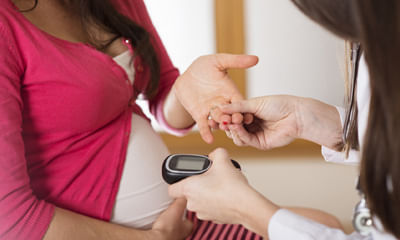Diabetes: Symptoms, Causes and Treatments
Diabetes: Symptoms, Causes and Treatments
Diabetes mellitus is a group of metabolic diseases in which a person experiences high blood glucose levels either because the body produces inadequate insulin or the body cells do not respond properly to the insulin produced by the body. Patients with diabetes often experience frequent urination (polyuria), increased thirst (polydipsia) and increased hunger (polyphagia).
There are three types of diabetes:
1) Type 1 diabetes
The body does not produce insulin. Some people may refer to this type as insulin-dependent diabetes, juvenile diabetes, or early-onset diabetes. People usually develop type 1 diabetes before their 40th year, often in early adulthood or teenage years.
Type 1 diabetes is nowhere near as common as type 2 diabetes. Approximately 10% of all diabetes cases are type 1.
Patients with type 1 diabetes will need to take insulin injections for the rest of their life. They must also ensure proper blood-glucose levels by carrying out regular blood tests and following a special diet.
2) Type 2 diabetes
The body does not produce enough insulin for proper function, or the cells in the body do not react to insulin (insulin resistance).
Approximately 90% of all cases of diabetes worldwide are type 2.
Some people may be able to control their type 2 diabetes symptoms by losing weight, following a healthy diet, doing plenty of exercise, and monitoring their blood glucose levels.
Being overweight, physically inactive and eating the wrong foods all contribute to our risk of developing type 2 diabetes. Drinking just one can of (non-diet) soda per day can raise our risk of developing type 2 diabetes by 22%, researchers from Imperial College London reported in the journal Diabetologia. The scientists believe that the impact of sugary soft drinks on diabetes risk may be a direct one, rather than simply an influence on body weight.
3) Gestational diabetes :-
This type affects females during pregnancy. Some women have very high levels of glucose in their blood, and their bodies are unable to produce enough insulin to transport all of the glucose into their cells, resulting in progressively rising levels of glucose.
Signs and Symptoms of Diabetes :-
The symptoms of diabetes occur because some or all of the glucose stays in the blood, and isn’t being used as fuel for energy. The body tries to reduce blood glucose levels by flushing the excess glucose out of the body in the urine.
The common signs and symptoms of diabetes include:
> Increased frequency of urination, especially at night
> Frequently feeling thirsty
> Weakness and fatigue
> Unexplained loss of weight
> Genital itching or thrush
> Blurred vision
> Increase in healing time of cuts and wounds
Management :-
Lifestyle :-
People with diabetes can benefit from education about the disease and treatment, good nutrition to achieve a normal body weight, and exercise, with the goal of keeping both short-term and long-term blood glucose levels within acceptable bounds. In addition, given the associated higher risks of cardiovascular disease, lifestyle modifications are recommended to control blood pressure.
Medications :-
Medications used to treat diabetes do so by lowering blood sugar levels. There are a number of different classes of anti-diabetic medications. Some are available by mouth, such as metformin, while others are only available by injection such as GLP-1 agonists. Type 1 diabetes can only be treated with insulin, typically with a combination of regular and NPH insulin, or synthetic insulin analogs.
Support :-
In countries using a general practitioner system, such as the United Kingdom, care may take place mainly outside hospitals, with hospital-based specialist care used only in case of complications, difficult blood sugar control, or research projects. In other circumstances, general practitioners and specialists share care in a team approach. Home telehealth support can be an effective management technique



+1.svg)
